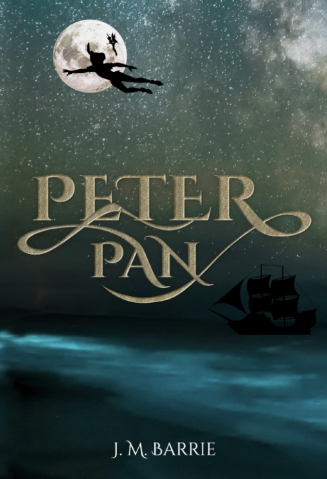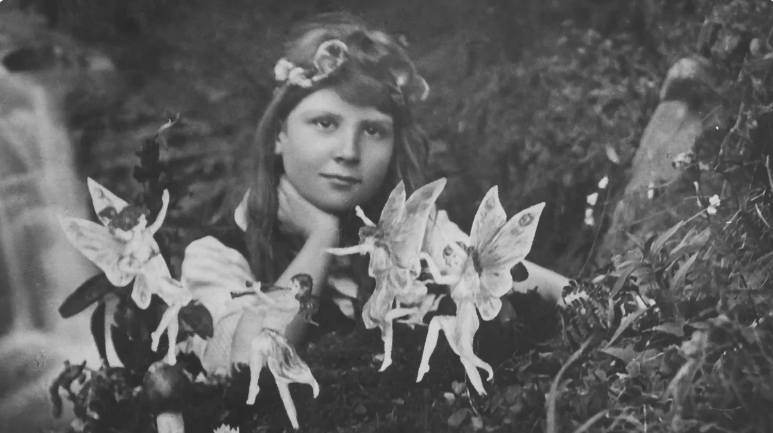
By Jill Lowe

Ida Rentoul Outhwaite image: kind permission from Haven Global
Yes indeed, as we can see from this excerpt of the Rose Fyleman poem:-
“There are fairies at the bottom of our garden!
They often have a dance on summer nights;
And the rabbits stand about and hold the lights.
Did you know that they could sit upon the moonbeams
And pick a little star to make a fan,
And dance away up there in the middle of the air?
Well, they can.”
Rose Fyleman
With such testimony in Rose Flyleman’s poem, with tongue-in-cheek, I say – there should be no doubt as to the presence of fairies (sometimes referred to as faeries) at the bottom of the garden. But for further evidence we may look no further than Heather Fawcett’s guide to the world of Fairies in her 2023 novel Emily Wilde’s Encyclopedia of Faeries. You see, in this fairy tale, Emily is a Cambridge Scholar singularly committed to “dryadology” in an early -1900’s world where the study of fairies is an acknowledged branch of the sciences. As a meticulous researcher (without tenure) she tells of strange and marvelous and sometimes scary, mysteries of fairies. Do delve in to her escapades.

Whether we talk of goblins, sylphs, brownies, pixies, gnomes, flower fairies or sprites, there is enormous interest. It is manifested with the many books related to fairies, with festivals throughout the United States which include costume events, fairy garden contests, fairy house displays as well as Renaissance Faires. In searching for such fairy festivals one can find nature-and family-oriented events at such establishments as the Nature Museum in Grafton, Vermont which will hold a Fairy House Festival in September 2024 or more commercial events with vendors, such as in York, Pennsylvania at the Enchanted Fairy Festival in September 2024. Illinois also has events but mostly in Spring, so best to plan for 2025.
The interest in fairies is manifested in different ways, it may be purely for appreciating the enchanted art and illustrations of the magical fairies. It might be for obtaining those illustrations for personal stationery or party invitations, or costume ideas, or merely reading about fairies.
Resources for fairy links follow. The Instagram site for the fairiemagazine which celebrates enchantment in the modern age, can link you to some exquisite fairy art by such artists as Asako Eguchi

llustration by Asako Eguchi. Website for Asako Eguchi

This first work published by Louisa May Alcott, Flower Fables (1854) is a charming collection of fanciful stories originally written for Ralph Waldo Emerson’s daughter, Ellen Emerson.

This enchantingly illustrated book A Natural History of Fairies, compiled in the 1920s by the botanist Professor Elsie Arbour for her niece, this gorgeous volume is filled with colorful sketches and precise notes detailing the secret life of fairies and their important role in the natural world. Inside, you will discover the wide and wonderful array of different species of fairies around the globe and explore where and how they live. Delight in this hidden world as you learn all about such vital information as the anatomy of a fairy.

The author and illustrator Cicely Mary Baker is prolific in all aspects of flower fairies with coloring books and seasonal flower fairy information.
She tells us in The Complete Book of Flower Fairies that Flower Fairies™ are tiny creatures (the biggest is only 8 inches tall) that live in the tree tops, marshes, forest floor, wayside and gardens. Wherever and whenever a seed sprouts, a Flower Fairy baby is born. Each Flower Fairy lives and sleeps in their chosen flower, plant or tree, and as this grows the fairy grows too.

Isn’t she just the sort of person to learn about flower fairies?

In her book Are there Fairies at the bottom of your Garden, Betsy Williams shares some of the fascinating bits of information about fairies and their ways that lay embedded like tiny, sparkling gems in the fabric of our ancient folk tales and legends. Also tells the story of the development of a Fairy Festival, and tips on how to create your own. There are recipes for fairy dust, and a way to make a fairy garden is included. The Betsy Williams website is also filled with lectures and classes in areas of nature.

No article concerning fairies would be complete if it did not include the illustrator Ida Rentoul Outhwaite. She was born in Australia in 1888 after the family emigrated from Northern Ireland in the 1870’s. Ida’s first book of illustrations appeared in 1903. Her books were a great success with the last major book appearing in 1930, although she continued to illustrate music sheets and make an occasional painting up to her death in 1960.
One of her desired books Fairyland of Ida Rentoul Outhwaite Hardcover – January 1, 1929 is available today for close to $1000.

The Little Book of Elves & Fairies is an exciting mix of poems and stories. It will draw the reader into the hidden world of fantasy. Find out about the many types of elves and fairies, what people believed about them, and how you should behave if you ever meet one.

Ida Rentoul Outhwaite image: kind permission from Haven Global

Ida Rentoul Outhwaite image: kind permission from Haven Global

Ida Rentoul Outhwaite image: kind permission from Haven Global

Ida Rentoul Outhwaite image: kind permission from Haven Global
Paintings and inclusion of fairies in literature
Many examples of their depiction is available, with good and bad fairies.
A list of some links to resources is in the notes below.
Most well known are the four fairies in A Midsummer Night’s Dream
_____________________________________________________________________________________________________________________________________________________________________________

Oberon, Titania and Puck with Fairies Dancing by William Blake, c. 1786
The fairies are Cobweb, Moth, Pease blossom and Mustard seed They are the maids of the Fairy Queen Titania that work for her. In Act II, one of them talks with Puck about the work that she does for the comfort of Titania (such as dewing her orbs). For hundreds of years, authors have written about fairies in novels, plays and stories. The English playwright William Shakespeare used fairies as major characters in this comedy.The play includes Oberon and Titiana, the king and queen of the fairies, and the mischievous fairy Puck.

J.M. Barries’s Tinker Bell may be tiny in stature, but she’s no pushover. Like many fairies, she can be cruel and vindictive, even while being Peter Pan’s faithful sidekick.

THE COTTINGLEY FAIRY PHOTOS
Whenever fairies are discussed, the notion of believing in fairies is questioned. Because many people have claimed to see fairies, the Cottingley fairy photos taken by two young cousins (aged 10 and 16) in 1917 provided the necessary proof.
The two girls were not known for lying and the photographs, taken with a box camera, were examined by a photographic expert in fake photography, who declared that the photos were not fakes. This even convinced the writer Sir Arthur Conan Doyle that fairies existed.
In the 1980’s the cousins confessed that they had simply photographed pictured of fairies that they had cut out and pinned to bushes with hat pins.
However one of them maintained to the end that they had genuinely seen fairies and had only reproduced what they had witnessed, and that so many wanted to believe. The cousins felt that to tell the truth would have been too embarrassing for Conan Doyle and they wanted to wait until he died before they told.
Even after the confession, there was no diminution in the belief in fairies.

One of the Cottingley Fairy photos
On Antiques Roadshow some 15 years ago the original photographs were presented by one of the girl’s daughter, as well as the actual camera – the quarter-plate `Midg’ camera manufactured by W Butcher & Sons, used to take the photos. Because in those days ‘the camera could not lie,” it was much easier to believe the photos were real. With much excitement, the appraiser on Antiques Roadshow predicted the camera and original photographs with such provenance might fetch some £25,000 at auction.

Quarter-plate `Midg’ camera manufactured by W Butcher & Sons reproduced with license from Science Museum, London
Surely there is no further need to prove the existence of fairies?

Ida Rentoul Outhwaite image: kind permission from Haven Global
Notes and Links:
Photo of Jill by Joe Mazza, Bravelux inc.
Photos copyright © 2024 Jill Lowe. All rights reserved
Images from Shutterstock license
Midg camera: License from Science Museum, London, UK
Bedrock Gardens festival highlights 2017
Ida Rentoul Outhwaite images with kind permission from Haven Global.
The Nature Museum in Grafton Vermont
Names of Fairies in Literature
The best books on Fairy Folklore
Fairies in Folklore and Literature
Asako Eguchi







